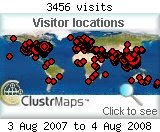The 8 MDGs break down into 18 quantifiable targets that are measured by 48 indicators. Click here for a full list of Goals, Targets and Indicators
Goal 1: Eradicate extreme poverty and hunger
Goal 2: Achieve universal primary education
Goal 3: Promote gender equality and empower women
Goal 4: Reduce child mortality
Goal 5: Improve maternal health
Goal 6: Combat HIV/AIDS, malaria and other diseases
Goal 7: Ensure environmental sustainability
Goal 8: Develop a Global Partnership for Development
The fight against poverty does not end after the succesful STAND UP event in various parts of the country and of the world. It was in fact a renewal of the commitment of different nations. From there, the momentum gained in raising the awareness of the people on the MDGs must be channeled to concrete efforts designed to alleviate the conditions of the poor and marginalized sectors of our society. Though several programs and interventions exist in pursuit of these goals, it is crucial that these initiatives be sustained by the government both in the national and local level. As such, the 2007 Local Elections is critical. It bears stressing that the public officials who will be voted into office must be politicians who are working and will continue to work towards the attainment of the MDGs for a better Philippines. That being said, our task is to intensify our advocacy campaign so the people and the politicians will work together towards development.
By telling them that development is about mothers not dying when they give birth, about children surviving their first few years, about getting every child into primary school, making sure that people have access to clean water where they live, then we will have concrete ways of framing the objectives for development.
As UN-Secretary General Kofi Annan said, "It is not in the United Nations that the Millennium Development Goals will be achieved. They have to be achieved in each country by the joint efforts of the Governments and the people ."
/rafs
======================================
The devastating effect of poverty on women (in general):
- If a girl is educated for six years or more, as an adult, her prenatal care, postnatal care and childbirth survival rates will dramatically and consistently improve.
- Educated mothers immunize their children 50 percent more often than mothers who are not educated.
- AIDS spreads twice as quickly among uneducated girls than among girls that have even some schooling.
- The children of a woman with five years of primary school education have a survival rate 40 percent higher than children of women with no education.
- A woman living in sub-Saharan Africa has a 1 in 16 chance of dying in pregnancy. This compares with a 1 in 3,700 risk for a woman from North America.
- Every minute, a woman somewhere dies in pregnancy or childbirth. This adds up to 1,400 women dying each day-an estimated 529,000 each year-from pregnancy-related causes.
- Almost half of births in developing countries take place without the help of a skilled birth attendant.
More than one billion people—one-sixth of the world’s population—live in extreme poverty, lacking the safewater, proper nutrition, basic health care and social services needed to survive. This means a single episode of disease, an ill-timed pregnancy, a drought or a crop-destroying pest can be the difference between life and death. In many of the poorest countries, life expectancy is half of that in the high-income world—40 years instead of 80 years.
The consequences of this poverty reach far beyond the afflicted societies. Poverty, inequality and disease are chief causes of violent conflict, civil war and state failures. A world with extreme poverty is a world of insecurity.














0 comments:
Post a Comment